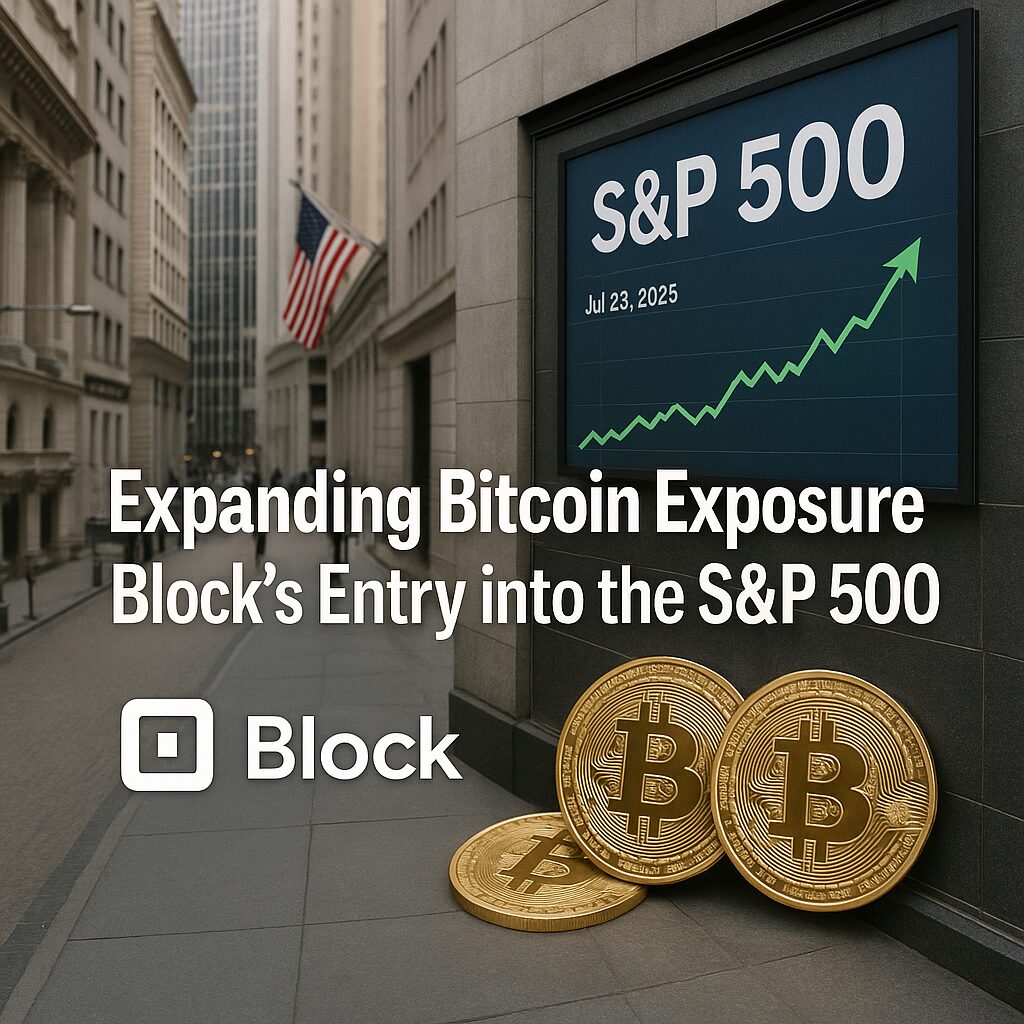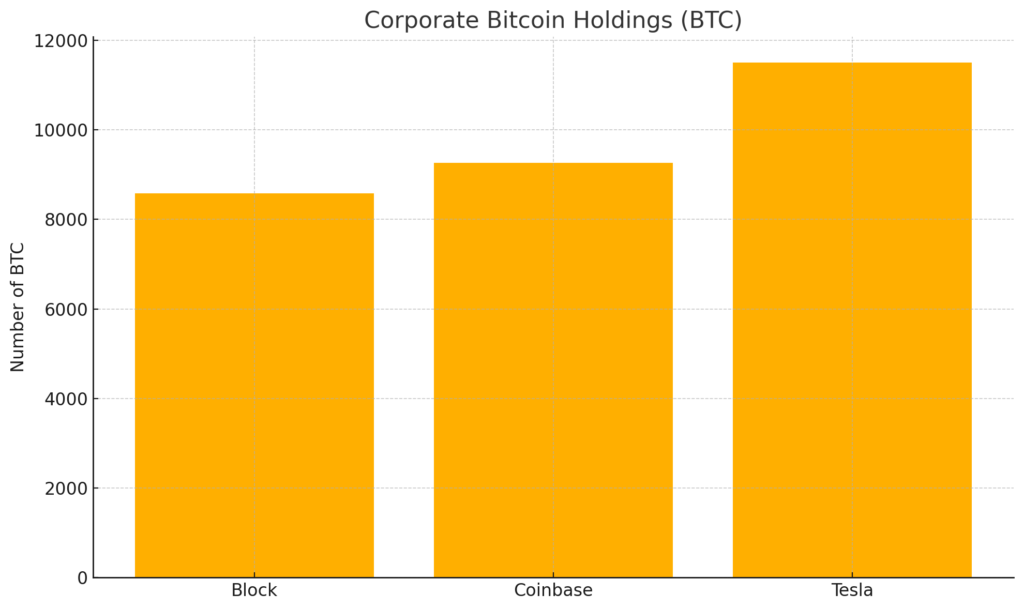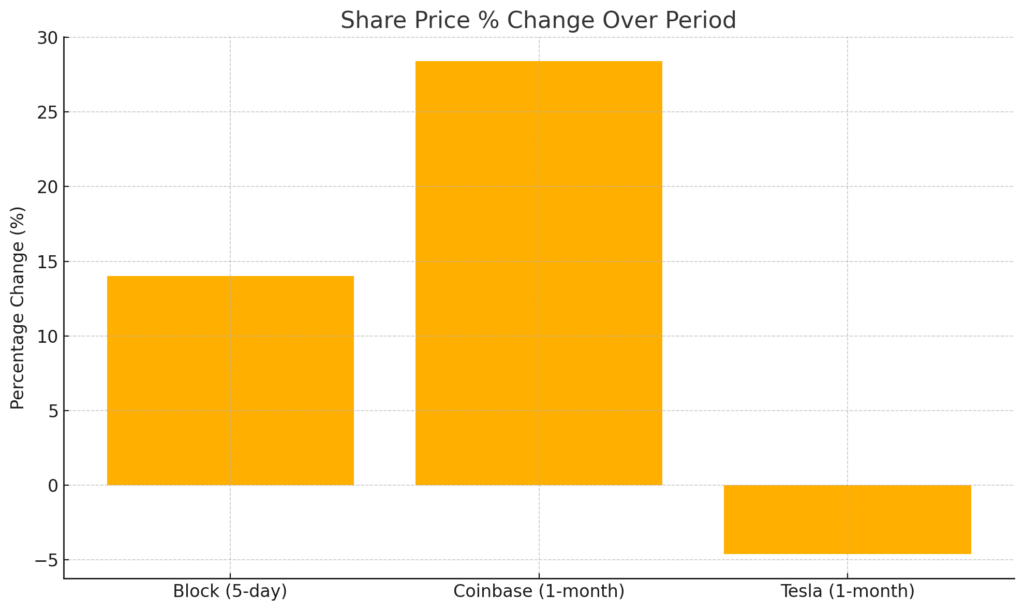
Main Points :
- Block Inc. officially joined the S&P 500 on July 23, 2025, replacing Hess Corp., becoming the third Bitcoin-holding company in the index.
- The company holds 8,584 BTC (≈ $1 billion), ranking 13th among public corporate Bitcoin treasuries.
- Block’s share price rallied approximately 14% over five trading days following the inclusion announcement.
- Peer comparisons: Coinbase (9,267 BTC; ≈ $1.1 billion) and Tesla (11,509 BTC; ≈ $1.4 billion).
- Broader trend: institutional Bitcoin exposure via index tracking, ETF innovations (e.g., BlackRock’s IBIT), and regulatory developments (SEC’s ETF stay orders).
1. Block’s Milestone S&P 500 Inclusion
Subtitle: From Square to S&P 500 Component
On Wednesday, July 23, 2025, Block Inc., the payments and financial-services company led by Jack Dorsey, was officially added to the Standard & Poor’s 500 index, replacing Hess Corp. following its acquisition by Chevron. This marks Block as the third publicly listed Bitcoin-holder to enter the benchmark, joining Coinbase Global and Tesla. To qualify, Block met the strict S&P 500 criteria—over $18 billion market capitalization, more than 10% public float, and positive earnings in the latest quarter.
2. Corporate Bitcoin Treasuries: Scale and Significance
Subtitle: How Much is Enough to Move the Needle?
According to BitcoinTreasuries.NET, Block holds 8,584 BTC, roughly $1 billion at current exchange rates, placing it 13th among corporate holders of Bitcoin. This substantial treasury signals the company’s strategic commitment to digital assets as part of its balance-sheet management.
(Insert Figure 1 here: Corporate Bitcoin Holdings)

3. Index Effect: Stock Performance Post-Announcement
Subtitle: Riding the Wave of Passive Inflows
Following the S&P 500 inclusion announcement, Block’s share price experienced an approximate 14% gain over the subsequent five trading days, driven by index-tracking funds reallocating capital. This so-called “index effect” often boosts stock demand ahead of the effective inclusion date, as passive ETF managers purchase required shares in anticipation of the rebalance.
4. Peer Comparison: Coinbase and Tesla
Subtitle: Who Else Brings Bitcoin to the Index?
- Coinbase Global (COIN): Holds 9,267 BTC (≈ $1.1 billion) and saw its stock rise 28.4% over the past month, outpacing the broader crypto market’s 23% gain.
- Tesla (TSLA): Holds 11,509 BTC (≈ $1.4 billion) but experienced a 4.6% stock decline in the same period, likely tied more to its automotive business performance than crypto factors.
(Insert Figure 2 here: Share Price % Change Over Period)

5. The Broader Crypto-ETF and Institutional Adoption Trend
Subtitle: From BlackRock’s IBIT to SEC Stay Orders
The addition of Block into a major equity benchmark comes amid explosive growth in crypto-related ETFs. BlackRock’s iShares Bitcoin Trust (IBIT) has already outperformed its flagship S&P 500 ETF in revenue generation this year, reflecting soaring demand for regulated Bitcoin exposure. However, the SEC continues to navigate regulatory complexity: Bitwise’s conversion of an index fund into a spot Bitcoin ETF was recently stayed, illustrating the evolving—and sometimes stalled—crypto-ETF approval landscape.
6. Implications for Investors and the S&P 500
Subtitle: Diversification, Risk, and Opportunity
Investors tracking the S&P 500 through ETFs and mutual funds now receive an indirect Bitcoin allocation, albeit small relative to the overall index’s $53 trillion market capitalization as of Q1 2025 マーケットウォッチ. While this signals greater mainstream acceptance of crypto as a financial asset, it also introduces additional sector-specific risks. Portfolio managers may need to reassess diversification strategies, balancing traditional equity exposures with burgeoning digital-asset allocations.
Conclusion:
Block’s inclusion in the S&P 500 solidifies Bitcoin’s gradual integration into mainstream investment vehicles. As traditional and digital finance continue to converge—fuelled by institutional adoption, ETF innovations, and evolving regulatory frameworks—crypto investors gain new avenues for exposure. Nevertheless, the novelty of digital-asset integration within core benchmarks advises a cautious approach, blending the potential upside of Bitcoin’s growth with prudent risk management.

